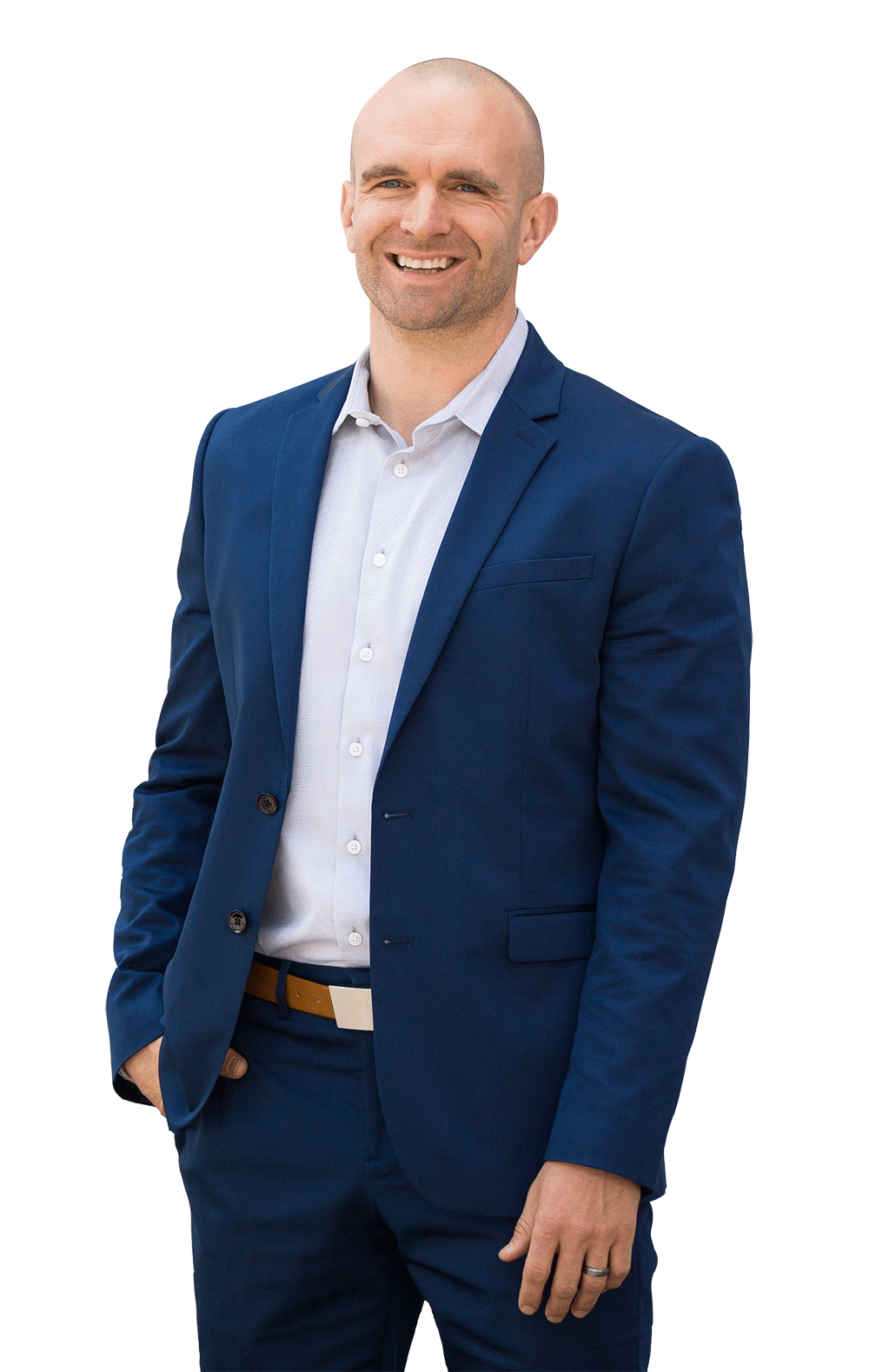Hosted By

Chief Executive Officer Cheeky Scientist
Skip ahead to:
4:53 – Show Me the Data
29:50 – Creating Atomic Habits As A PhD w/James Clear
1:00:00 – What Is A Regulatory Industry Position? w/Bryant Moeller, Ph.D.
1:02:10 – Power Of Non-Traditional Networking Opportunities w/Jessica Kishimoto, Ph.D.
What is your worst job search habit?
Do you want to create new habits that will lead you to a successful industry transition?
In this episode of Cheeky Scientist Radio, James Clear, best-selling author of Atomic Habits, discuss practical strategies you can use to create new habits that will not only improve your job search but teach you how to be continuously improving and always reaching greater levels of success throughout your career.
About Our Guest
James Clear is the author of Atomic Habits and a writer focused on habits, decision-making, and continuous improvement. His work has appeared in the New York Times, Entrepreneur, Time, and on CBS This Morning. His website, jamesclear.com, receives millions of visitors each month and hundreds of thousands subscribe to his popular email newsletter.
He is a regular speaker at Fortune 500 companies and his work is used by teams in the NFL, NBA, and MLB. Through his online course, The Habits Academy, Clear has taught more than 10,000 leaders, managers, coaches, and teachers. The Habits Academy is the premier training platform for individuals and organizations that are interested in building better habits in life and work.
Key Takeaways
1. Be aware of your personality and genes in order to design the best habit creating strategy for you.
2. Optimize for the start rather than for the outcome by honing in on the first two minutes of the habit you are trying to build.
3. Habits consist of 4 stages: 1. Cue 2. Craving 3. Routine 4. Reward
More About This Show
As PhD, we tend to overachievers. We are go-getters. So, you’ve probably tried to create a new good habit in your life before. You’ve probably tried to make a big positive change in your life. Maybe you thought, “I need to start working out everyday for 2 hours.” You take on this huge goal, do it for one or two days and then you quit. This doesn’t work. The real key to making big changes is to start small by creating powerful small habits.
In this episode, our guest James Clear dives deep into the best strategies to create “Atomic Habits” that can create powerful change in your job search and your life. James Clear is the author of Atomic Habits, his website, jamesclear.com receives millions of visitors each month and hundreds of thousands of people subscribe to his popular email newsletter. He is a regular speaker at Fortune 500 companies and his work is used by teams in the NFL, NBA, MLB. He has taught more than 10,000 leaders, managers, coaches and teachers how to build habits in their life and work.
Why Habits Save Energy And How To Make New Habits
In The Power Of Habit by Charles Duhigg a study compared the brain activity of mice from the first time they entered a maze with their brain activity after they had been going through the maze for a week. They found that the first time through the maze, their brain activity was high the entire time, the mouse was struggling to make it though. However, after a week, traveling the maze became a habit, and this caused a dramatic drop in the brain activity while the mouse was completing the maze. Conclusion: habits make tasks that once were difficult and consumed a lot of energy much easier to complete by automating the behavior.
A study published in Health Psychology investigated the effectiveness of creating a flossing habit. They found that when participants used the ‘cue’ of tooth brushing to initiate the flossing habit, the number of times a person flossed in a 2 week period more than doubled from an average of 4.15 to 9.98 times. Conclusion: Creating new habits is most effective when there is a clear ‘cue’ for when you should do the new habit.
Creating Atomic Habits: A Conversation with James Clear
Isaiah: What I really liked about your book is you offered something that I haven’t seen anywhere else, you talk about how genes and personality influence habits. Can you tell us how genes and personality affect a person’s ability to create good habits?
James: There had been a variety of studies that had linked each of the Big Five personality traits to the genetic code, to DNA, in some way. There’s some biological underpinning for these personality aspects. That is the technical scientific definition of personality is that it’s the quality or set of characteristics that go with you from situation to situation
So for your particular set of genes, for your particular personality, there may be certain habits that are easier for you to do based on what your natural skill set is and there are also may be some strategies that make more sense for you based on where your strengths and weaknesses lie.
So for example, if you are high in agreeableness than maybe things like getting people together for a social night out or writing thank you notes, things that are considered warm and considerate and kind. Those habits might come more naturally to you than they would to someone else who is low in agreeableness.
Similarly, someone who is high in conscientiousness is someone who’s very neat and orderly and organized. So if you’re low in conscientiousness then it might be more important from a strategy standpoint for you to say prime your environment so that you have exposure to have good cues and you leave it less likely for you to just remember to do the right thing because you’re not that kind of person. So the more your environment is primed for that the better you position yourself to follow through with those habits.
Isaiah: Let’s say, I am a PhD, I’m introverted, I have a tough time networking, public speaking, et cetera. But, I want to create some better habits in these areas. Where do I start?
James: So there are a variety things that you can do. In the book, Atomic Habits, I lay out a framework that I call the Four Laws of Behavior Change. One way to think about it is that they’re kind of like four tools in a tool box and you can take out which tool you need based on the circumstance you’re facing.
First I recommend something I call the two minute rule. The basic idea is that you take whatever habit you’re trying to build and you scale it down to just the first two minutes.
So you take whatever habit you’re trying to build, whether it’s “I want to read 30 books in the next year” or “I want to do 20 minutes of yoga three days a week” whatever it is, and you scale it down to just the first two minutes. So read 30 books becomes read one page or do 20 minutes of yoga becomes take out my yoga mat. And the point of that is that a habit must be established before it can be improved.
Whenever we’re looking to change a habit we often start by optimizing for the finish line. We think about, alright, I want to earn six figures next year or I want to read 30 books. We’re very outcome-focused. But instead I think we should optimize for the starting line instead of the finish line. Because if you can do that, you can master the art of showing up every day then you actually have a chance to optimize and improve something.
Isaiah: Can you take us through what the components of a habit are and then how to use those components to stack habits?
James: My model starts with a cue, there’s some kinda cue that captures your attention. Usually it’s visual, humans are very visual creatures, but it doesn’t have to be. So let’s say, for example, that you walk into a room and you see a plate of cookies on the counter. So it’s a visual cue.
The next stage, and this is the stage that I added to my model, is what I would call craving. It’s about the interpretation that you have regarding that cue. So if you see a cue, you have a high craving, you see the cookies and then you say, oh these are gonna be tasty, you interpret them as being a positive thing. The perceived value is high.
That craving leads to the third stage, which is the response or the actual routine. So you pick up the cookie and you eat it.
And then finally there’s a reward. So the cookie is sugary, it’s tasty, you enjoy it and so on. And these four stages kinda create a feedback loop and as you repeat them more and more it gets tightened and pretty soon you can do all four stages on auto pilot.
Habit stacking is this idea that you can use your current habits to initiate a new habit. So you want to stack the new behavior that you want to perform on top of an old one.
So for example after I make my morning cup of coffee I will meditate for 60 seconds. Or if you want to build a habit of reading more you could say OK, my normal morning routine is I wake up, I turn off my alarm, I make the bed and then I take a shower. And so you could say, OK, now my new habit stack is I turn off the alarm, I make my bed, I set a book on my pillow and then I take a shower. So that when you get in bed at night there’s a book waiting for you to read. But the idea here is that you want to stack that new behavior on top of an old one.
Listen to the full podcast episode to get even more insight into: How to make creating new habits easiest, practical tips for making your habits stick and much, much more!
To get advanced access to the full length versions of these podcasts, as well as access to our live training webinars, exclusive training videos, case studies, industry insider documents, transition plan, and private online network, get on the waitlist for the Cheeky Scientist Association now.










